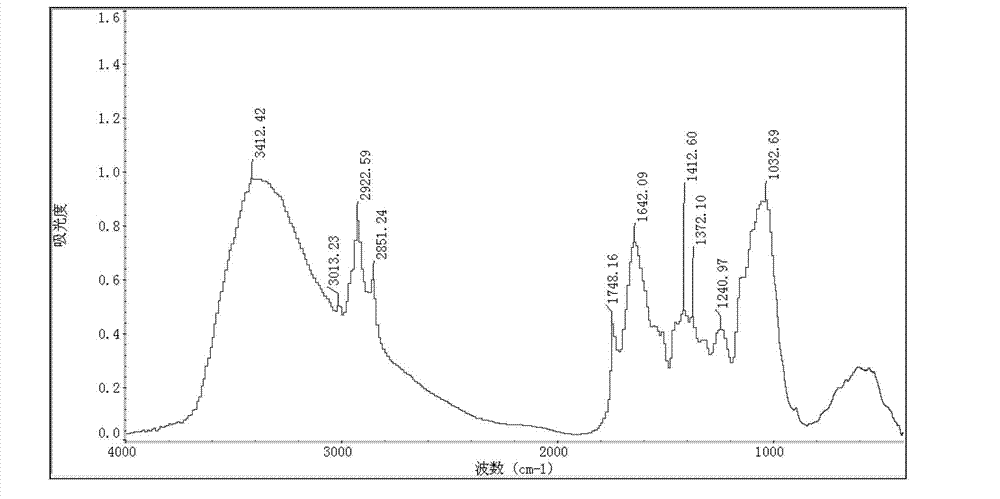Method for detecting plasmodiophora brassicae in Chinese cabbages
A technology for Brassica rhizogenes and Chinese cabbage, which is applied in the field of microbial detection and achieves the effects of high repeatability, convenient operation and accurate detection.
- Summary
- Abstract
- Description
- Claims
- Application Information
AI Technical Summary
Problems solved by technology
Method used
Image
Examples
Embodiment 1
[0046] The preparation of embodiment 1 sample
[0047] Chinese cabbage samples were collected from Xinmin City under Shenyang City, Liaoning Province, China.
[0048] Chinese cabbage samples: roots of Chinese cabbage infected with Plasmodium brassicae;
[0049] Roots of healthy Chinese cabbage (means not infected with Plasmodium brassicae);
[0050] Leaves of Chinese cabbage infected with Plasmodium brassicae;
[0051] Leaves of healthy Chinese cabbage (means not infected with Plasmodium brassicae).
[0052] The basic identification and judgment of Chinese cabbage infected by Plasmodium brassicae is based on conventional symptom observation and the application of specific PCR experiment technology (R.Faggian S.Parsons.Arapid diagnostic test for clubroot[J].Horticulture Australia).
[0053] (1) Freeze-dry the Chinese cabbage sample at -70°C, put it in a mortar, and grind it into a powder with a particle size of less than 2 μm with a pestle;
[0054] (2) The potassium bromid...
Embodiment 2
[0056] Example 2 Collection and Data Analysis of Fourier Transform Infrared Spectroscopy (FTIR)
[0057] Scan the compressed tablet prepared in Example 1 with a Fourier transform infrared spectrometer to obtain the infrared spectrum of the Chinese cabbage sample, and compare and analyze the infrared spectrum of the Chinese cabbage sample infected by Plasmodium brassicae and the healthy Chinese cabbage sample. During the scanning process, dry air is continuously fed into the sample area in the Fourier transform infrared spectrometer to drive off water vapor.
[0058] The scanning conditions of the infrared spectrum are as follows:
[0059] Temperature: room temperature (25°C);
[0060] Scanning range: 4000~500cm -1 ;
[0061] Resolution: 4cm -1 ;
[0062] Number of scans: 100 times.
[0063] The analysis of infrared spectral data was obtained after analysis by Grams32 software (Galactic Industries, Salem, NH, USA), and the analytical spectral range was 4000~500cm -1 segm...
Embodiment 3
[0076] Example 3 Using polymerase chain reaction (PCR) and Fourier transform infrared spectroscopy (FTIR) to detect Plasmodium brassicae in Chinese cabbage
[0077] Root samples (D1) known to be infected with P. brassicae (P. Ltd) extracted Chinese cabbage tissue genomic DNA according to the method provided in the instructions, carried out PCR amplification with specific primers of Plasmodium brassicae, and analyzed the amplified products by 1% agarose gel electrophoresis.
[0078] Specific primers are:
[0079] NS7 (upstream primer): 5'-GAGGCAATAACAGGTCTGTGATGC-3';
[0080] Pb3R (downstream primer): 5'-ACCATACCCAGGGCGATTG-3'.
[0081] The PCR amplification system is shown in the table below.
[0082] Element
[0083] Reaction conditions:
[0084] Pre-denaturation at 95°C for 4min; denaturation at 95°C for 30s, annealing at 55°C for 30s, extension at 72°C for 30s, a total of 30 cycles; extension at 72°C for 10min.
[0085] Depend on Figure 5 It can be seen th...
PUM
| Property | Measurement | Unit |
|---|---|---|
| particle diameter | aaaaa | aaaaa |
| thickness | aaaaa | aaaaa |
Abstract
Description
Claims
Application Information
 Login to View More
Login to View More - R&D
- Intellectual Property
- Life Sciences
- Materials
- Tech Scout
- Unparalleled Data Quality
- Higher Quality Content
- 60% Fewer Hallucinations
Browse by: Latest US Patents, China's latest patents, Technical Efficacy Thesaurus, Application Domain, Technology Topic, Popular Technical Reports.
© 2025 PatSnap. All rights reserved.Legal|Privacy policy|Modern Slavery Act Transparency Statement|Sitemap|About US| Contact US: help@patsnap.com



